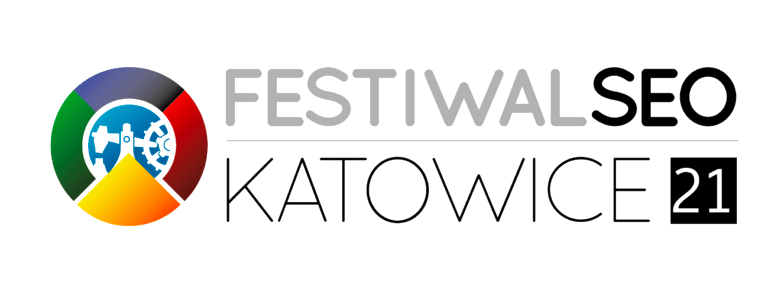Are your SEO efforts not yielding the desired results? You might be wondering, “What are toxic backlinks and how are they affecting my website’s SEO?” The culprit behind your SEO woes could be toxic backlinks. In this comprehensive guide, we’ll delve into the world of toxic backlinks, teaching you how to identify, remove, and prevent them from wreaking havoc on your site’s SEO in the future.
Short Summary
- Understand and define toxic backlinks to maintain SEO performance.
- Identify low quality websites, unnatural link patterns, and irrelevant content in your backlink profile.
- Use strategies such as contacting webmasters or disavowing to remove toxic backlinks, auditing regularly for maintenance & preventing future issues.
Understanding Toxic Backlinks
Toxic backlinks, also known as spammy links or low-quality links, are links that negatively impact your website’s reputation and SEO performance. While high-quality, relevant, and authoritative backlinks can boost your search engine rankings, a toxic link has the opposite effect, often resulting in penalties from search engines.
Search engines are constantly updating their algorithms to identify and penalize websites with toxic backlinks. It is.
Defining Toxic Backlinks
So what makes a backlink toxic? Toxic backlinks are usually found on low-quality, spammy websites that provide little or no value to their visitors. Furthermore, these links are often created using black-hat SEO tactics, such as:
- Link schemes designed to manipulate search engine rankings
- Buying or selling links
- Participating in link farms or link networks
- Using automated link-building software
In contrast, quality backlinks are earned, valuable, and strategically placed, helping your website’s reputation and SEO.
Origins of Toxic Links
Toxic backlinks can originate from various sources. Some common origins include:
- Spammy sites created solely for SEO purposes
- Black-hat SEO tactics like link farms or private blog networks (PBNs)
- Negative SEO attacks where competitors intentionally create harmful backlinks to damage your website’s reputation.
Regardless of the source, it’s crucial to identify and address these toxic backlinks to safeguard your site’s SEO performance and maintain a healthy backlink profile.
Recognizing Toxic Backlinks
To successfully identify toxic backlinks, you should be aware of their common characteristics. Here are some things to look out for:
- Low-quality websites with poor domain authority
- Unnatural link patterns (such as excessive use of exact-match anchor text)
- Associated with unrelated or irrelevant content
- Spun or stolen content
By conducting backlink audits using tools like Google Search Console, SEMRush, Moz, or Majestic, you can effectively analyze your backlink profile and pinpoint any potentially harmful links.
Low-Quality Websites
One common characteristic of toxic backlinks is their origin from low-quality, spammy websites, which are often considered bad links. These sites often have poorly written content, templated designs, and little information about their owner or purpose. In some cases, these websites may even be part of link farms or other black-hat SEO tactics designed to manipulate search engine rankings.
By identifying and disavowing such links, you can help protect your website’s reputation and maintain a healthy backlink profile.
Unnatural Link Patterns
Another telltale sign of toxic backlinks are unnatural link patterns, such as paid links. For example, excessive use of exact-match anchor text (where the link is attached to the keyword the article seeks to rank for) can indicate the presence of toxic backlinks. Identifying and eliminating such unnatural links is essential to prevent penalties from search engines and maintain a healthy backlink profile.
Regular monitoring of your backlinks and vigilance in spotting such patterns can help you stay ahead of potential issues.
Irrelevant or Unrelated Content
Lastly, toxic backlinks can also stem from irrelevant or unrelated content. These links may be found on websites that have no connection to your site’s niche or industry. Including such links can have a detrimental effect on your website’s overall topic or purpose, resulting in a decrease in search engine rankings.
To maintain a healthy backlink profile, it’s crucial to identify and disavow links from unrelated or irrelevant content, focusing instead on building quality, relevant backlinks.
Spun or Stolen Content
Another source of toxic backlinks is spun or stolen content. Spun content refers to articles or blogs that have been reworded or rephrased using automatic software. The aim is to create a new piece that appears different but retains the original’s meaning.
On the other hand, stolen content is exactly what it sounds like – content that has been copied directly from another website without permission or attribution.
Both spun and stolen content are considered unethical practices in the world of SEO. Search engines, particularly Google, are adept at identifying such content and can penalize websites associated with it. Therefore, if you find backlinks from websites that engage in content spinning or theft, it’s advisable to disavow them immediately to protect your website’s SEO performance.
Assessing the Impact of Toxic Backlinks on SEO
The presence of toxic backlinks can have severe consequences on your website’s SEO performance. These harmful links can lead to decreased search rankings, penalties from search engines like Google, and a loss of organic traffic. This is why it’s crucial to identify and address toxic backlinks as soon as possible to maintain your site’s SEO health and reputation.
To mitigate the impact of toxic backlinks, you can employ various strategies such as contacting webmasters for link removal, using Google’s Disavow Tool, and continuously monitoring your backlink profile for any new harmful links. By staying proactive in addressing toxic backlinks, you can safeguard your website’s SEO performance and ensure long-term success.
Tools and Techniques for Identifying Toxic Backlinks
There are several tools and techniques available for identifying toxic backlinks. Some popular tools for backlink analysis include:
- SEMRush
- Ahrefs
- Moz
- Google Search Console
These tools can help you conduct a comprehensive backlink audit, allowing you to identify any toxic links in your site’s backlink profile and make informed decisions about whether to remove or disavow them.
A telltale sign of a toxic backlink profile is an unnatural ratio between referring domains and backlinks.
This means that there are many backlinks from a single (usually low-quality) domain which could indicate a potential negative SEO attack.
Another thing is blogspot links.

Blogspot links are universally recognized as trash.
You can spot toxic links by the URL itself:
Just take a look at these domains. The URLs immediately seem a little shady.
Finally, visit the site if you’re unsure. If it looks unfinished, bland, and the content is bad, you can disavow.
Spot toxic backlinks using tools and manual reviews. Look for signs: low-quality sites, unnatural link patterns, irrelevant content, and strange URLs. Address these links quickly to protect your SEO.
Strategies for Removing Toxic Backlinks
Once you’ve identified toxic backlinks, it’s essential to take action to remove them and protect your website’s SEO. Two primary methods are available for dealing with toxic backlinks. Contact the website owner from whom the link is coming and request them to remove it. Otherwise, you can disavow those links yourself.
Contacting the linking site owner is the preferred method, as it allows you to maintain a good link.
Contacting Webmasters
The first step in removing toxic backlinks is to reach out to the website owner or administrator and request the link’s removal. You can find their contact information on the website itself or through a domain search. Be polite and professional in your request, explaining the negative impact the toxic backlink has on your website’s SEO performance.
Remember to follow up as necessary until the process is completed.
Using Google’s Disavow Tool
If contacting the webmaster is unsuccessful or not possible, you can use Google’s Disavow Tool to inform Google to disregard the toxic backlinks. To use the Disavow Tool, you’ll need to create a text file containing the URLs of the toxic backlinks and upload it to the tool.
Ensure that you only include toxic backlinks in your disavow file, as disavowing high-quality links can harm your website’s SEO.
Here’s how to do it:
- Go to Google Disavow Tool and log in to your Google Search Console.
- Create your disavow text file. It has to be formatted like so:
One line per page/domain and you have to specify whether you want to disavow just the page or the full domain. Make sure that you don’t add proper links here—you don’t want to get rid of them.
- Select your property and upload the file.
- You will be prompted to choose a file, go ahead and choose the .txt file you made.
- That’s it! The links pointing to your site will soon be disavowed. According to Google, it takes a couple of days to process and a few months to see results.
Monitoring Progress
After taking the necessary steps to remove or disavow toxic backlinks, it’s important to continuously monitor your backlink profile to ensure the harmful links have been removed and your site’s SEO health improves. Regularly review your backlinks using backlink audit tools and stay vigilant in spotting any new toxic links that may appear.
By proactively addressing and working to fix toxic backlinks, you can maintain a healthy backlink profile and safeguard your website’s SEO performance.
Prevention and Maintenance: Avoiding Toxic Backlinks in the Future
While removing toxic backlinks is crucial, it’s even more important to prevent them from occurring in the first place. Here are some strategies to help you prevent toxic backlinks.
- Focus on building quality links.
- Conduct regular backlink audits to identify and remove any toxic backlinks.
- Stay informed about the latest SEO updates and best practices. By following these strategies, you can minimize the risk of toxic backlinks harming your website’s SEO performance.
Building Quality Links
To improve your site’s SEO and avoid toxic backlinks, focus on:
- Building high-quality, relevant, and authoritative backlinks from reputable websites within your niche or industry
- Guest blogging and providing valuable, shareable content
- Fostering relationships with other websites in your field
By building a strong backlink profile with quality links, you’ll enhance your site’s credibility and search engine rankings, ultimately driving more organic traffic to your website.
Regular Backlink Audits
Performing regular backlink audits is essential in identifying and addressing potential toxic backlinks before they harm your site’s SEO. By regularly reviewing your backlink profile using backlink audit tools, you can pinpoint any harmful links and take the necessary steps to remove or disavow them.
Regular backlink audits not only help you maintain a healthy backlink profile, but also ensure that your SEO efforts remain effective and up-to-date with search engine best practices.
Staying Informed About SEO Updates
Finally, staying informed about the latest SEO updates and best practices is crucial in maintaining a healthy backlink profile and avoiding toxic backlinks. Here are some ways to stay informed.
- Follow reliable SEO blogs and websites
- Sign up for industry newsletters—I love SEOFOMO by Aleyda Solis and SEO Notebook by Steve Toth!
- Participate in SEO communities and forums—SEO Signals Lab and Fat Graph Content Ops are two of my favorite ones.
- Follow SEO experts on social media—Matt Diggity and Fery Kaszoni are my suggestions.
By following these steps and adhering to Google’s webmaster guidelines, you can ensure that your website stays compliant with the most recent SEO guidelines and best practices.
Staying up to date with the latest SEO trends and practices is essential for any website owner.
Google and Toxic Backlinks
Over the years, Google has significantly evolved its algorithm to become highly proficient at identifying toxic links. Now, it usually disregards these harmful links rather than penalizing the associated website immediately. However, this doesn’t mean that you should ignore toxic backlinks. It’s still essential to regularly audit your backlink profile and remove or disavow any toxic links to maintain a healthy SEO profile, especially in the case of a negative SEO attack. Google is not perfect at this and can sometimes penalize you for such links, even if you’re not at fault.
Summary
In conclusion, understanding and addressing toxic backlinks is crucial in maintaining your website’s SEO performance and reputation. By identifying and removing harmful links, focusing on building quality backlinks, conducting regular backlink audits, and staying informed about the latest SEO updates, you can safeguard your website’s search engine rankings and drive more organic traffic to your site. Don’t let toxic backlinks hold your website back – take the necessary steps to protect and improve your website’s SEO today!
Frequently Asked Questions
How do I know if my backlink is toxic?
To determine if a backlink is toxic, it is helpful to use an SEO site audit tool like SEMRush or Ahrefs to check for low trust, link schemes or link networks, text manipulation, hidden links, or other signs of non-compliant backlinks that could harm your domain’s ranking in Google.
What are toxic backlinks in SEO?
Toxic backlinks are links that negatively affect your SEO from low-quality, untrusted sites. Spotting and removing them is essential for maintaining good SEO rankings.
What are bad backlinks?
Bad backlinks are any links that search engines consider spammy or irrelevant, which can lead to your website being ranked lower in search results. These links often come from spam websites and may include outdated or artificial content.
As such, it’s important to monitor your website for bad backlinks and take action to have them removed.
How do you fix toxic backlinks?
To fix toxic backlinks, use a tool to identify all bad links pointing to your website, then contact the webmaster and request removal.
Create and submit a ‘disavow’ file to Google to ignore those links, which will ensure they no longer impact your site’s reputation.
What tools can I use to identify toxic backlinks?
Tools like SEMRush, Ahrefs, Moz, and Google Search Console can help you identify toxic backlinks through backlink audits.



















